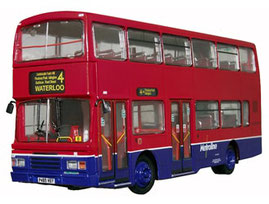
LEYLAND Service Manuals & Wiring Diagrams PDF


LEYLAND Brand History
Some LEYLAND Service Manuals & Wiring Diagrams PDF are above the page.
In 1897 the first steam truck of Leyland Motors company was assembled. The debut experiment with the development of a passenger car took place only in 1920, when the company's management decided to engage in an economically more profitable business. It was necessary to design an expensive and comfortable high-end model that could compete with Rolls-Royce.
The creators of the first passenger model of the company was Godfrey Perry Thomas - the chief engineer of the company and, besides, the once famous racer. In 1917, he was commissioned to design the best car in the world, without thinking about the costs of its production. To help Thomas came then young still Reid Ralton, who in the future became famous for several developments. For example, one model, created as the fastest, acquired the name of an outstanding engineer - Railton.
To create the first Leyland passenger car model, which received the Eight designation, a seven-cylinder in-line engine was chosen with a volume of about 7 liters. The motor was also equipped with one upper camshaft, leaf valve springs, and the valves themselves were opposite to each other. Presented a new car was at the London Automobile Exhibition "Olympia" in 1920. He attracted a lot of attention, because he was the first car in the UK with a straight-row 8-cylinder engine. It was still a prototype, but its price was developing even then - the chassis cost two and a half thousand pounds sterling. Journalists immediately called the novelty "The Lion of Olympia." By the time of the first sales, the chassis cost was reduced to 1,875 pounds sterling, and the first 5-seater car cost 2,700 pounds sterling, which certainly affected the demand for the car, making it quite low.
The undercarriage of the Leyland Eight was thought through to the smallest detail. The only brakes on the rear wheels were equipped with a vacuum amplifier. In addition, the rear axle was equipped with cantilever quarter elliptical springs, between which was a special stabilizer for lateral stability. A distinctive feature of the rear axle was also a small positive collapse, which helped to overcome the unevenness of the roads of that time.
The body of the model Leyland Eight, designed for two, was slightly angular in shape, and also featured round headlights in a square case and a rectangular radiator. Over time, there was a 5-seat tourist body, followed by a Windover coupe and a sedan made by Vanden Plus. The power of the unit was 145 horsepower, which allowed the car to accelerate to 121 km / h. But the project was still failed - it was possible to sell only 18 copies. As a result, developer Perry Thomas based on the chassis Leyland Eight created two racing cars. The first - for yourself, and the second - for the driver Jay Pee Howe.
In 1922, Perry Thomas moved from Leyland to another firm - Brooklands, where, on the basis of his own copy, Leyland Eight developed a new model also under the brand Leyland. The car with the engine a little more than seven liters and a capacity of 200 hp was named Leyland Thomas. It was the second and, in fact, the last car produced under the brand name of Leyland.
In 1927, another copy of the Leyland Eight bus was built, but by Thomson & Taylor, which used the original model details. However, the body of this design was significantly different from the body of the prototype. It is this car that has survived to this day, as all the other Leyland Eight buses in the 1930s-1940s of the 20th century were shipped.
After an unsuccessful experiment with a car, the company Leyland Motors again switched to manufacturing trucks, which it did until the 1960s. During this time, the company joined the company AEC and Albion. And in the 60s of the 20th century the company was once again going to produce cars, having bought several car manufacturing companies, such as Alvis, Standard-Triumph and Rover. As a result, a concern was formed under the name of British Leyland. At the same time, the management plans included the renaming of the well-known models Morris, Rover and Austin in Leyland, as well as the development of new ones - these were Leyland Car project No. 8 (LC8) and Leyland Motors project No. 10 (LM10). However, unfortunately, these projects have not been realized.
Already in the early 1970s in Australia, cars with a spacious interior, released under the brand Leyland, were produced. They were equipped with 6- and 8-cylinder engines. But even these models did not attract much attention. In 1975, a controlling interest was bought by the government of Great Britain, and the production of passenger cars under the brand Leyland was discontinued.
